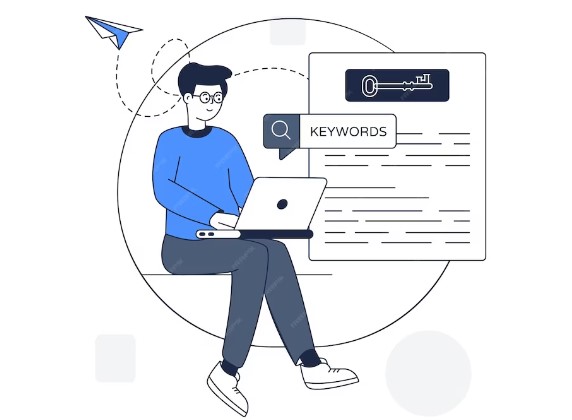In the ever-evolving landscape of digital marketing and SEO, there’s a continuous tug-of-war between two essential strategies: User Intent and Keyword Targeting. These approaches have their unique advantages, but the key to success lies in understanding when and how to use them effectively. In this blog post, we will explore the significance of user intent and keyword targeting and provide insights into how your digital marketing and SEO efforts can strike the perfect balance to meet searcher needs effectively.
Understanding User Intent
User intent, in the context of SEO and digital marketing, refers to the specific goals and motivations of users when they perform an online search. It’s about getting into the minds of your target audience, understanding what they are looking for, and providing them with the most relevant content or solutions.
User intent can be broadly categorized into four types:
- Informational Intent: Users are seeking information or answers to their questions. For example, “How to tie a tie” or “Benefits of yoga.”
- Navigational Intent: Users are looking for a specific website or web page. For instance, “Facebook login” or “Apple support.”
- Transactional Intent: Users intend to make a purchase or perform a specific action. Common examples include “Buy iPhone 13” or “Book flight to Paris.”
- Commercial Investigation Intent: Users are in the research phase and are considering various options before making a decision. They might search for “best budget smartphones” or “top digital marketing tools.”
Understanding the user intent is crucial because it allows you to create content that aligns with what the searcher wants. When you meet their needs effectively, it can lead to higher engagement, improved user satisfaction, and ultimately, higher conversions.
The Role of Keyword Targeting
Keywords are the building blocks of SEO. They are the words or phrases that users type into search engines when looking for information, products, or services. Keyword targeting involves selecting and optimizing content for specific keywords to rank higher in search engine results pages (SERPs).
Keyword targeting can be broken down into several aspects:
- On-Page SEO: Optimizing your website content, meta tags, and headings with relevant keywords.
- Content Creation: Developing content that incorporates target keywords and provides value to the audience.
- Backlinks: Building links from authoritative websites using anchor texts that include your target keywords.
- Local SEO: Targeting location-based keywords for businesses looking to attract local customers.
- Paid Advertising: Using keywords for pay-per-click (PPC) campaigns on platforms like Google Ads.
While keyword targeting is undoubtedly crucial for SEO, the real challenge is to strike a balance between using keywords effectively and aligning with user intent.
The Balancing Act
Balancing user intent and keyword targeting can be likened to walking a tightrope. You must optimize your content for relevant keywords while ensuring it addresses the user’s intent accurately. Here are some strategies to achieve this balance effectively:
Conduct Comprehensive Keyword Research
Start by conducting thorough keyword research to identify the terms and phrases that your target audience is using. Consider both the search volume and keyword difficulty. Tools like Google Keyword Planner, SEMrush, and Ahrefs can help in this process.
Categorize Keywords by Intent
Once you have a list of keywords, categorize them based on user intent. This will help you create a content strategy that addresses the various needs of your audience. For informational intent, create educational content; for transactional intent, focus on product or service pages.
Create High-Quality Content
The content you create should be of high quality, informative, and well-researched. Make sure it answers the user’s questions or provides solutions to their problems. Don’t stuff your content with keywords; instead, use them naturally.
Optimize Meta Tags and Headings
Your meta titles and descriptions should clearly convey what your content is about while incorporating your target keywords. Use relevant headings and subheadings to guide users through your content.
Monitor User Behavior
Pay attention to user behavior metrics, such as bounce rate, time on page, and click-through rate. These metrics can indicate whether your content is aligning with user intent effectively. If you notice high bounce rates, it may signal a mismatch between your content and user expectations.
Adapt and Evolve
SEO is not a one-time effort; it’s an ongoing process. Keep an eye on changes in user intent and adjust your keyword targeting and content strategies accordingly. As search trends evolve, so should your approach.
Case Studies: Striking the Right Balance
Let’s explore a couple of case studies to better understand how the right balance between user intent and keyword targeting can yield impressive results:
Case Study: Informational Intent
Imagine you run a website offering fitness advice and products. You notice a growing trend in searches for “home workout routines” (informational intent). By creating in-depth, well-structured articles and videos that provide valuable home workout routines, you can meet the user’s informational intent while targeting keywords related to home workouts. This can drive more organic traffic and establish your website as an authoritative source in the fitness niche.
Case Study: Transactional Intent
For an e-commerce site selling tech gadgets, targeting keywords like “best gaming laptops” (commercial investigation intent) can lead to high conversion rates. Create product reviews, comparison guides, and category pages that incorporate these keywords while helping users make informed purchase decisions.
Conclusion
The ongoing synergy between user intent and keyword targeting is not a matter of choosing one over the other. To thrive in the digital marketing and SEO landscape, it’s imperative to seamlessly integrate both strategies. By comprehending the user’s intent, conducting thorough keyword research, and crafting top-notch, informative content that resonates with what searchers seek, you can establish a harmonious balance.
By achieving this equilibrium, you can elevate your SEO company’s website visibility in search engine results, elevate user engagement, and ultimately drive more conversions. In the ever-evolving digital terrain, the ability to adapt and discover this equilibrium will be a fundamental catalyst for success for your SEO company.






 +91 9718184875
+91 9718184875 info@ethicalseosolutions.com
info@ethicalseosolutions.com


